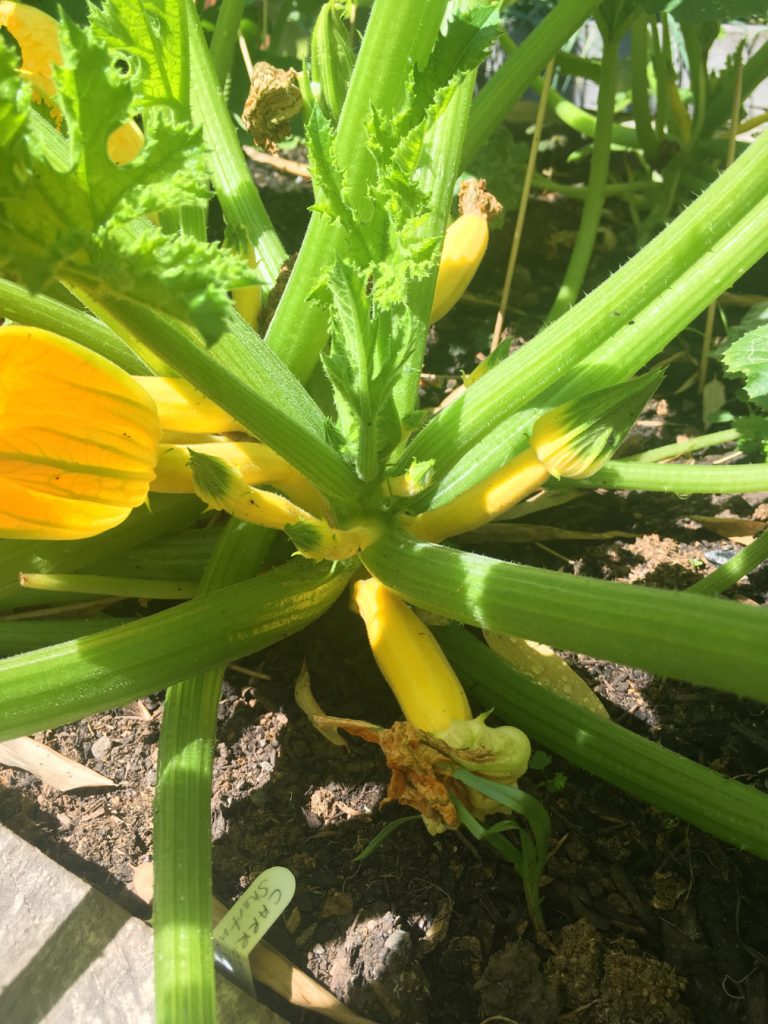If you are lucky, and if the weather is warm and sunny, this should be the month when the crops sown in the greenhouse earlier in the year start to ripen. This is particularly the case if you don’t wait around for them to become big, allotment show prize-winning specimens, or even as big as they get in the shops. One of the many benefits of growing your own crops is that you can pick them when they are tiny, and this is often when they are at their best. Courgettes are a great example of this. Those from the shops are ok, but they are big, watery and flavourless. Picked when they are pencil-length however, they have much denser and sweeter flesh. The posher supermarkets know this, and will bundle them up and sell them this size for a premium price, but you don’t have to pay that. All you have to do is pick them perhaps a week earlier than you would if you waited for them to get to average size. Like this they are perfect in salads in a way no ordinary courgette will ever be, sliced into rounds and dressed and mixed with some feta cheese and mint. Or they can be sliced lengthways and fried slowly in olive oil and served as a side dish. Get them even earlier for a real delicacy: courgette flowers. They are famously wonderful stuffed, battered and fried, but they are also very good fried in butter and salt or just torn up and thrown on top of a salad for decoration. They are something that even the fanciest of supermarkets wont sell, because they go over so quickly and get damaged in transit. But you have some perfect intact ones outside, which you are waiting to turn into the equivalent of a supermarket courgette.

It’s not just courgettes. The enjoyment of many vegetables can be hugely increased by cropping them early. Think of tiny baby carrots and turnips, picked long before they develop any woodiness and when they are as sweet as they will ever be. French beans, runner beans, mange touts, broad beans all benefit from being picked when young and small. The key here is regular and thorough cropping. As soon as your plot starts to produce in any kind of abundance, harvesting should become your main job. It is so easy to spend the year growing and then miss out on the best moments to eat the crops that you have so lovingly grown. Make catching them at their peak your main priority now, or it was all for nothing.
Of course this is the reverse for many crops. There are lots that really need to fully mature. Sweetcorn is the obvious one, and is one of the crops that really needs to be harvested with pinpoint accuracy. When you think one might be ready, peel back the culm a little and pierce one of the kernels. If you find watery juice within it is not yet mature, and will not be its sweetest. If you find a mealy consistency and no juice at all your sweetcorn is overripe, and will have lost that lovely juicy texture. Pick when the liquid is milky. Other crops want to be left as long as you can bear to leave them: strawberries, tomatoes and chillies will all grow sweeter and sweeter if you can just leave them for one more day, and then another, soaking up the sun and turning it to sweetness. But this is the time of year for the baby veg, so don’t hang around. Get out there and harvest those little veg often.


